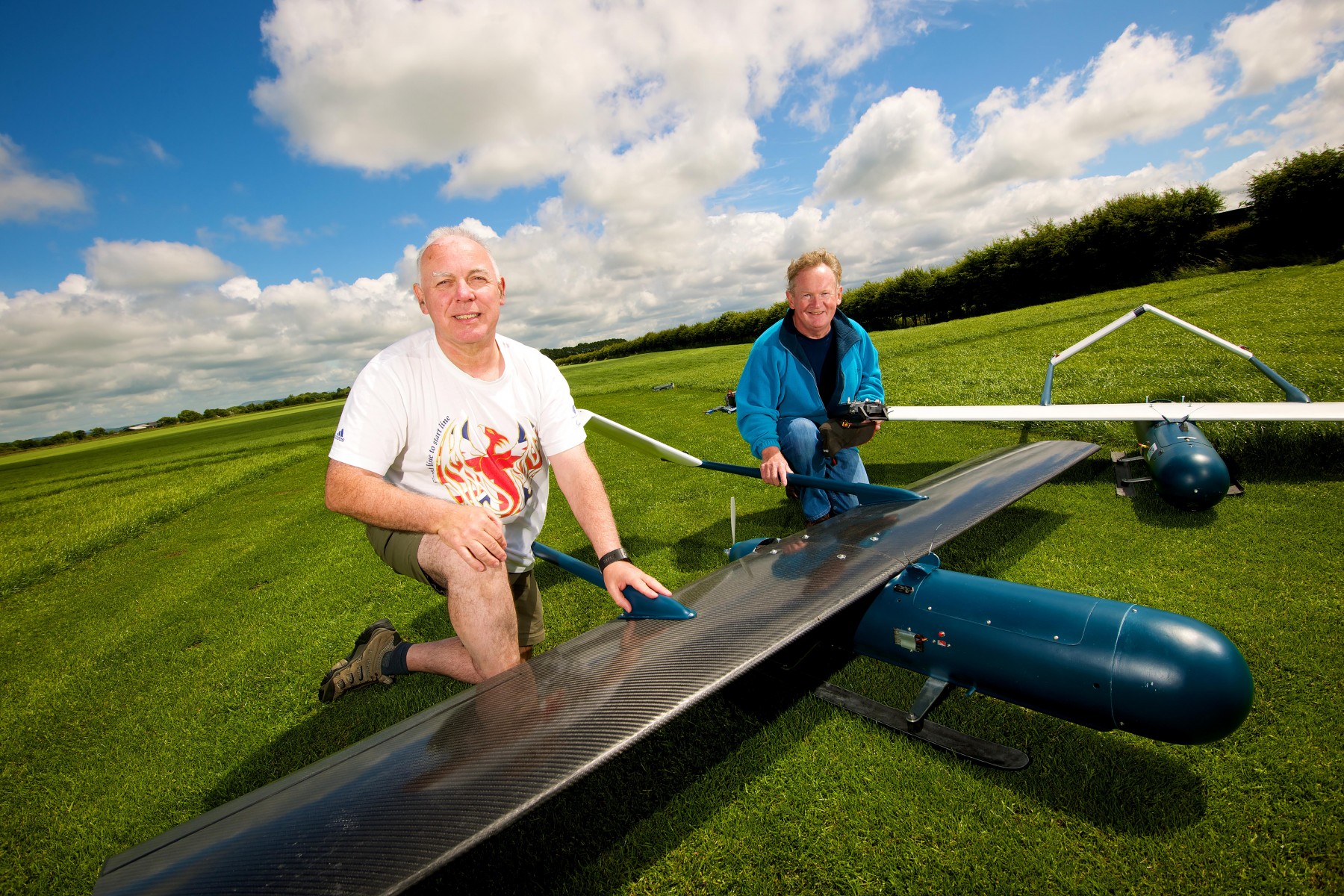World’s first flight of graphene-skinned aircraft to take place at Farnborough Air Show
- The world's first public flight of an unmanned aerial vehicle incorporating graphene
- Impact resistance of aircraft improved 60% over carbon fibre wings

Test flight signals launch of graphene roadmap for industrial application and commercialisation within the aerospace industry.
A pioneering research collaboration between the University of Central Lancashire (UCLan) and The University of Manchester’s National Graphene Institute (NGI) will result in the world’s first public flights of an unmanned aircraft (named Prospero) part skinned in graphene.
The flights will take place at Farnborough Air Show 2016 on 15, 16, 17 July.
The test flight, incorporating the new skinned wing, represents the next stage in the research partnership which last year investigated the effects of graphene in drag reduction, thermal management and ultimately the ability to achieve lightning strike protection for aerospace and other related opportunities.
Billy Beggs, UCLan’s Engineering Innovation Manager, said: “Last year’s tests were very encouraging and proved to us that graphene has huge potential for aerospace; it is incredibly strong, yet lightweight and flexible at the same time.
“Through the data collected from those initial flights our research has now moved on to the next level by developing processes of infusing graphene into composite structures. This newly skinned wing, produced by our industrial partners Haydale Composite Solutions, is enabling us to test the structural and weight saving benefits of graphene.
“The research team is still in the early stages of flight testing with the new remotely piloted aircraft but initial test data is already very encouraging. In terms of impact resistance the new wing is showing increased levels of impact resistance of up to 60% over a conventionally-skinned carbon fibre wing.”
Graphene as a material is still relatively new but already we are seeing a range of applications not only for aerospace but also in many other markets
University of Manchester Graphene Business Director James Baker said: “This collaboration between the National Graphene Institute and other academic and industrial partners – including a number of SMEs – is a great example of how graphene might be used as a potentially disruptive technology in a market like aerospace and help maintain the UK’s position in this key market.
“Through partnership we have managed to produce a world-first demonstrator and I am encouraged by the pace of development that has taken place. Graphene as a material is still relatively new but already we are seeing a range of applications not only for aerospace but also in many other markets.
“We look forward to developing a graphene aerospace strategy working closely with the UK Aerospace Technology Institute (ATI) and further development of this exciting technology”
The NGI opened in March 2015 and has 50 industrial partners working on collaborative projects to develop graphene applications of the future.
Dr Darren Ansell, UCLan’s Space and Aerospace Engineering Lead, added: “We are at the forefront of a research journey which could have a huge impact on the aerospace industry in the years to come.
“Although our research road map covers a twenty year period it’s quite possible that the aerospace industry could begin using graphene within the next twelve months.”


